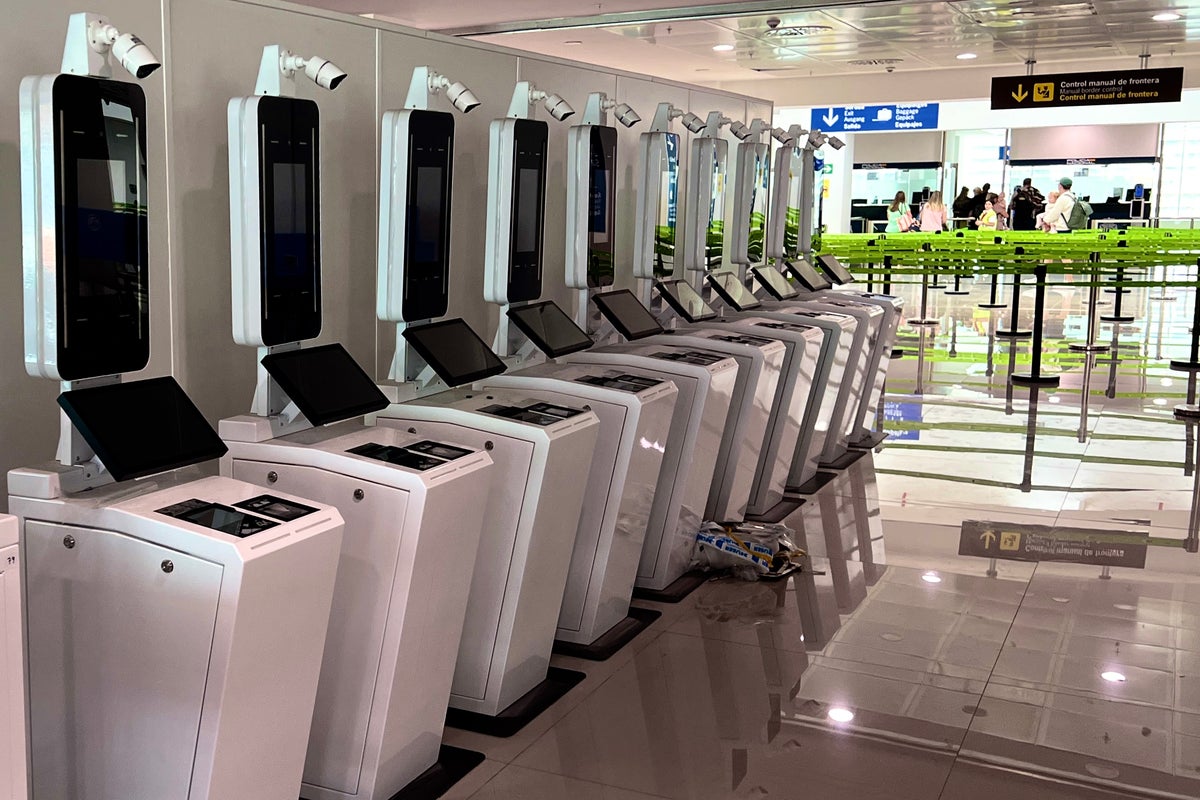Your support helps us to tell the story
From reproductive rights to climate change to Big Tech, The Independent is on the ground when the story is developing. Whether it’s investigating the financials of Elon Musk’s pro-Trump PAC or producing our latest documentary, ‘The A Word’, which shines a light on the American women fighting for reproductive rights, we know how important it is to parse out the facts from the messaging.
At such a critical moment in US history, we need reporters on the ground. Your donation allows us to keep sending journalists to speak to both sides of the story.
The Independent is trusted by Americans across the entire political spectrum. And unlike many other quality news outlets, we choose not to lock Americans out of our reporting and analysis with paywalls. We believe quality journalism should be available to everyone, paid for by those who can afford it.
Your support makes all the difference.Read more
Dozens of tall, sophisticated and expensive machines stand idle at Palma de Mallorca airport – one of the key gateways to Spain for British holidaymakers. They are the kiosks that will take facial biometrics and fingerprints from arriving passengers to comply with the much-delayed EU entry-exit system (EES). But they will remain idle for a while longer; Spain is adopting a slow and cautious approach to the new digital borders scheme.
As a consequence of the Brexit agreement, which made UK citizens “third-country nationals” in relation to the EU, all British holidaymakers and business passengers will be subject to EES checks on entry and exit. By 9 April 2026, the aim is that the entry-exit system will apply at all external frontiers of the Schengen area, which encompasses most of the EU plus Iceland, Norway and Switzerland.
Three countries – Estonia, Luxembourg and the Czech Republic – say they will be operating the entry-exit system for all arrivals and departures from day one, 12 October 2025.
Other countries have told The Independent they will be rolling out the EES starting at a single airport: for Germany, Dusseldorf; for Norway, Oslo.
Spain, the most popular nation for British holidaymakers, will initially only test the EES with a single flight arriving at Madrid airport on the first day of the system.
Other airports will follow, and then Spain’s few land borders. It is not clear if the crossing from Gibraltar is included, because under a new treaty the British Overseas Territory is soon to be subsumed into the Schengen area in all but name.
Sea ports, including the ferry destinations from the UK of Bilbao and Santander, will be last to be included.
The Spanish government says: “During the six-month trial period for the EU EES, it will be implemented gradually at Spanish border crossings, first at airports, then at land borders, and finally at sea borders.
“On Sunday 12 October, the first test will be conducted with passengers on a flight arriving at Madrid-Barajas-Adolfo Suarez Airport early in the morning.”
It is not clear when other major air gateways, including Alicante, Barcelona, Malaga and Tenerife, as well as Palma, will follow.
